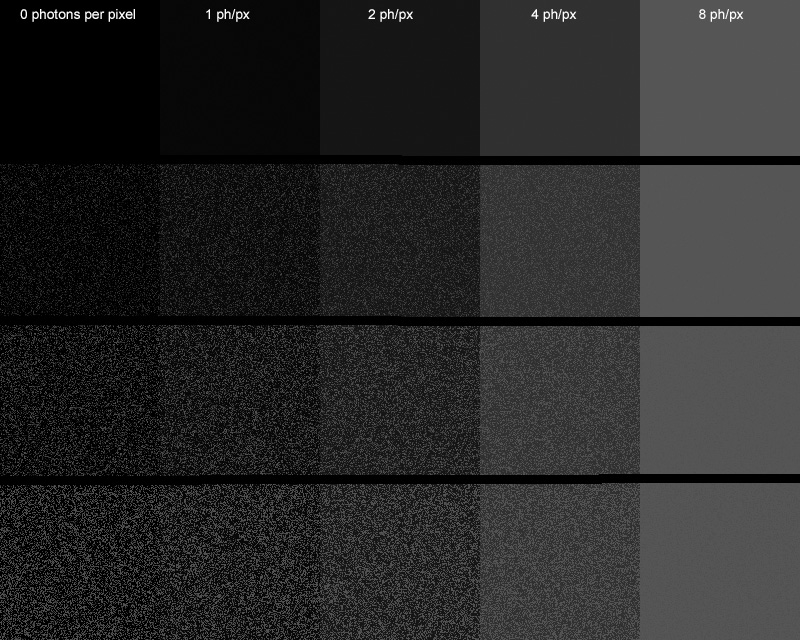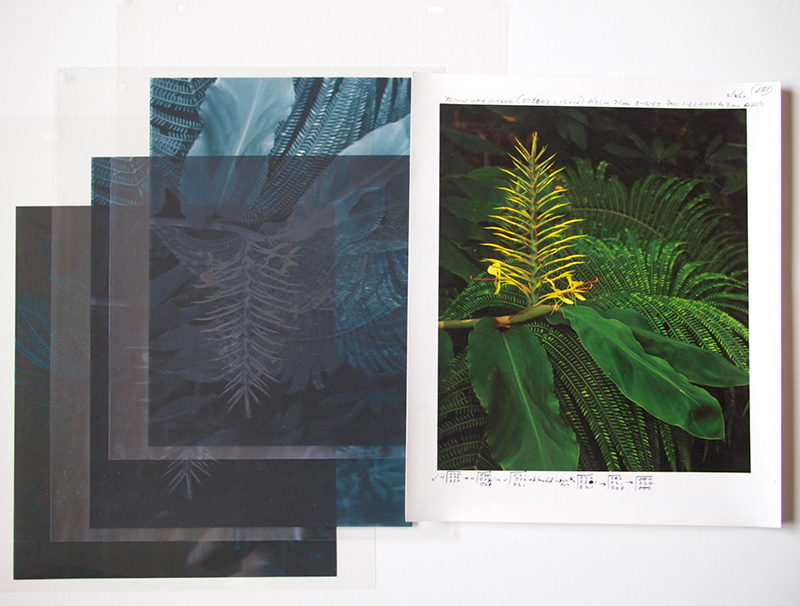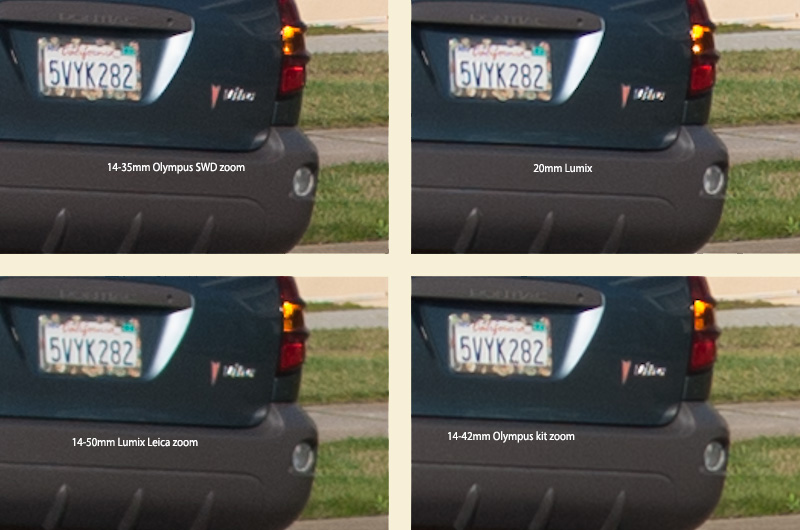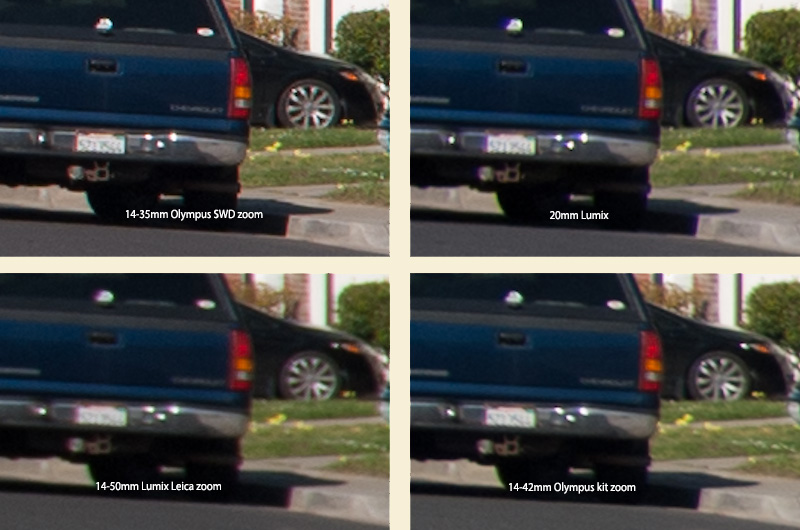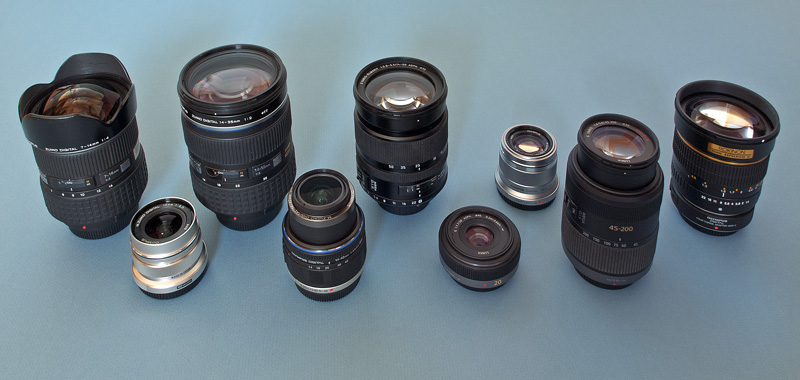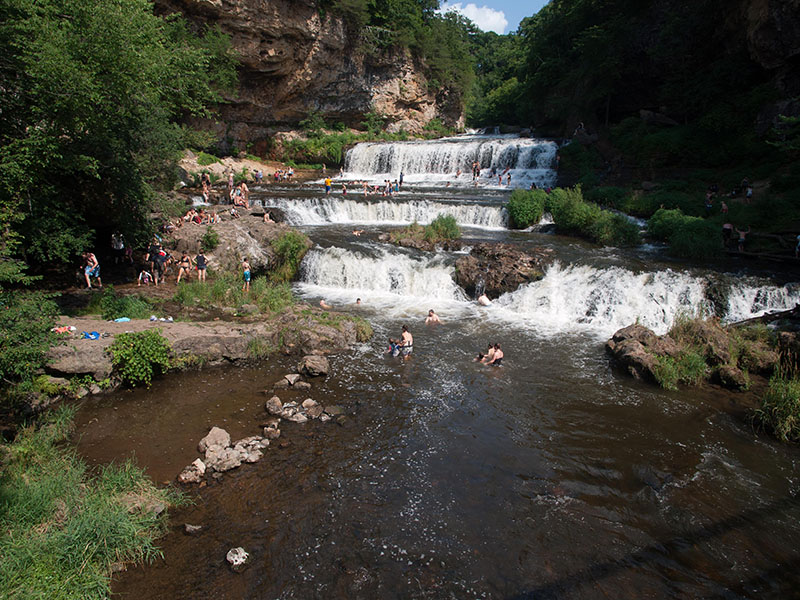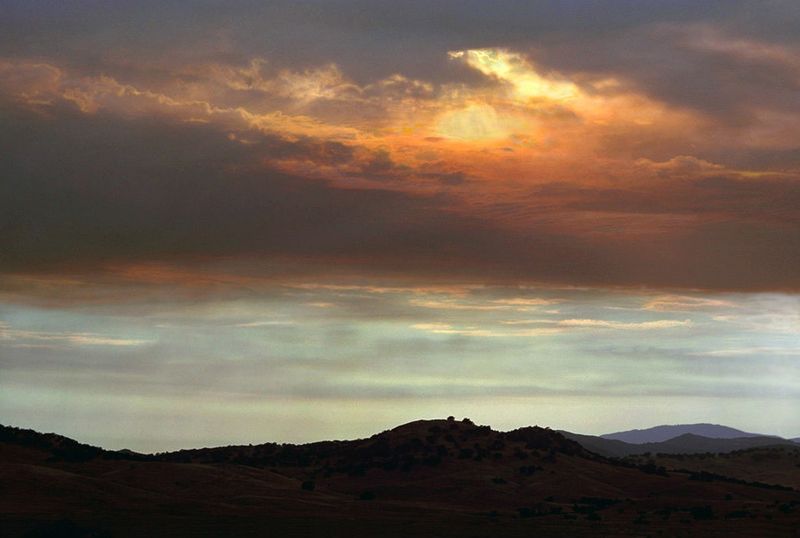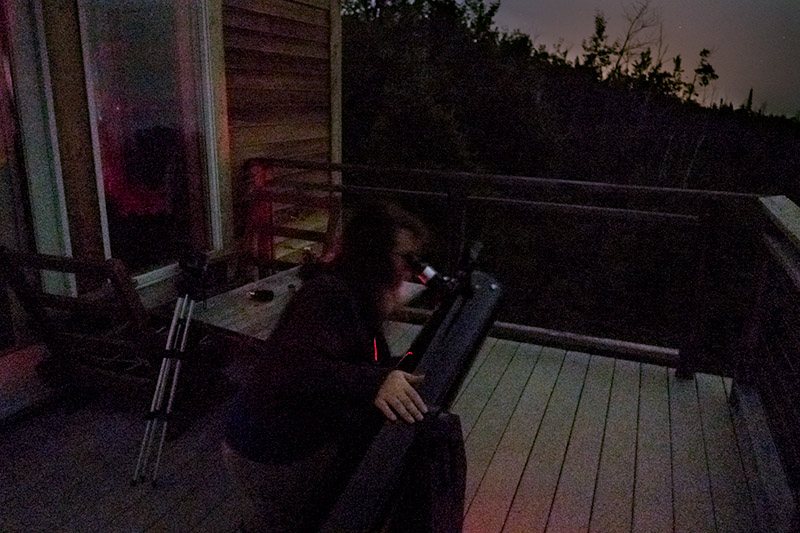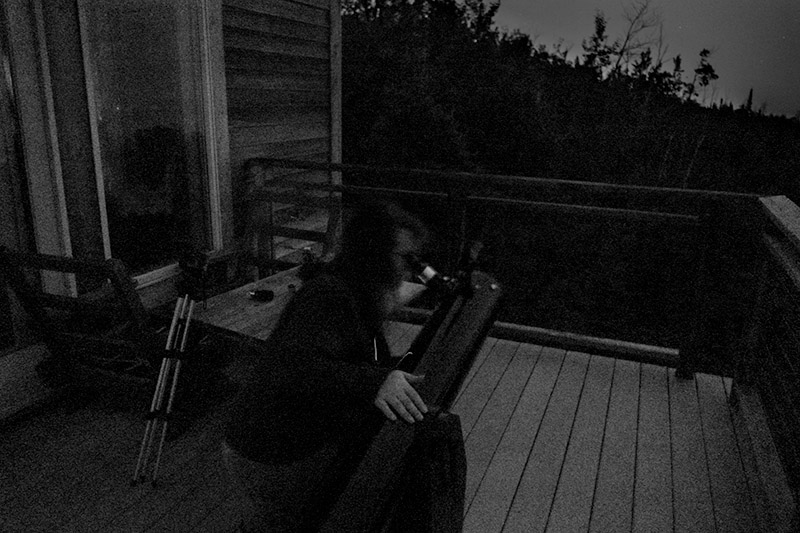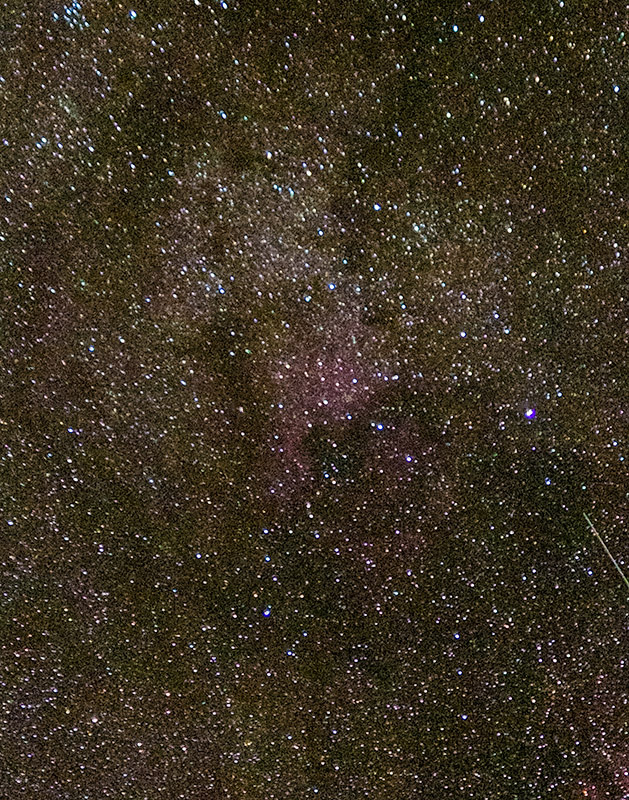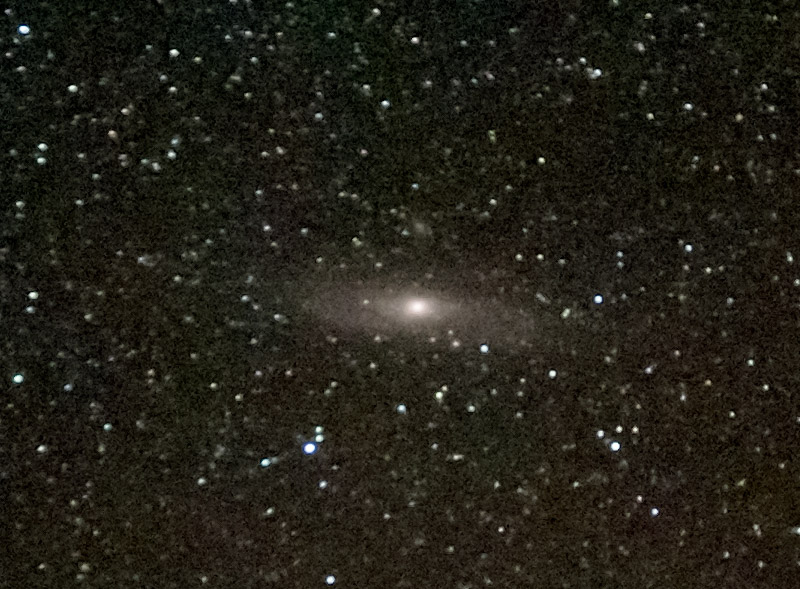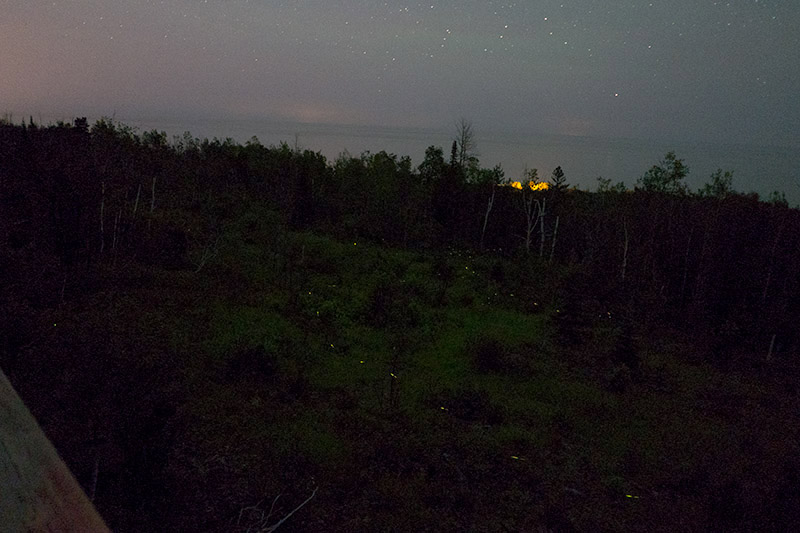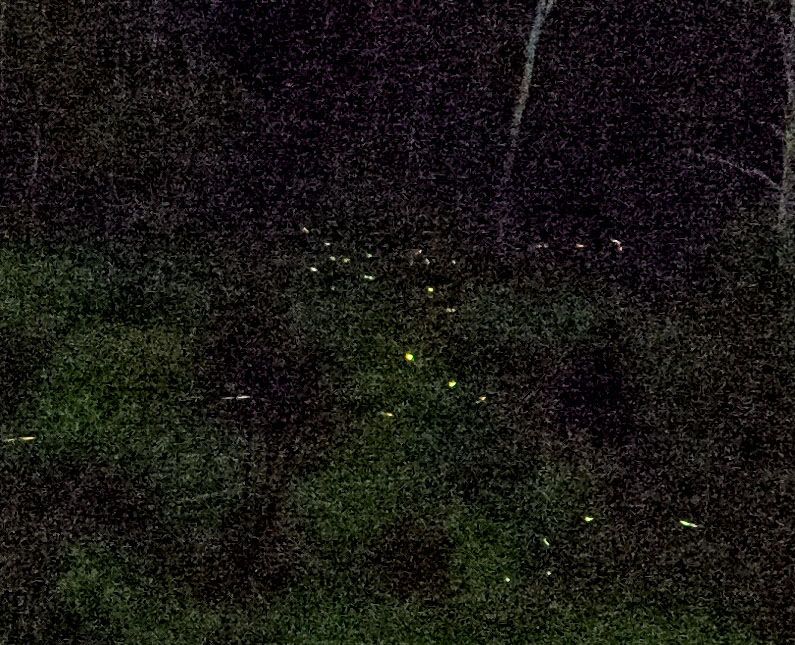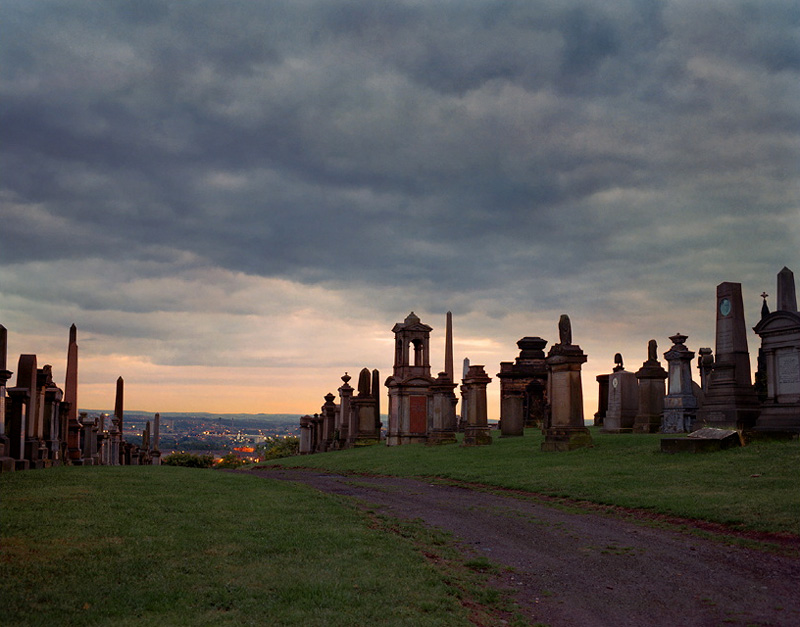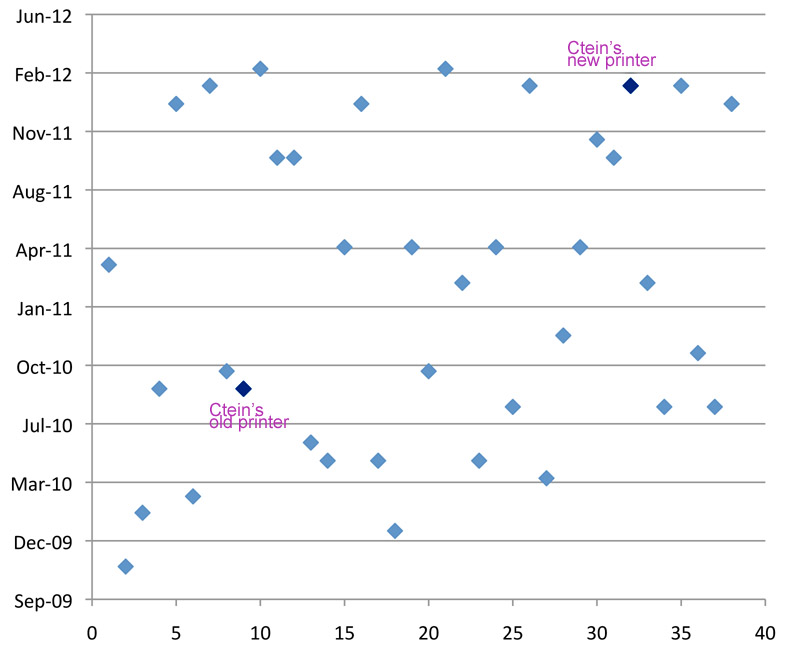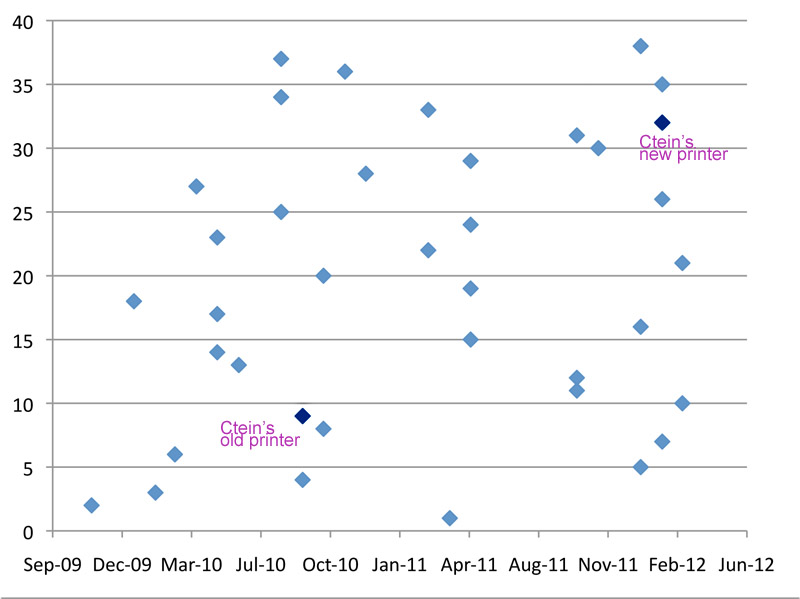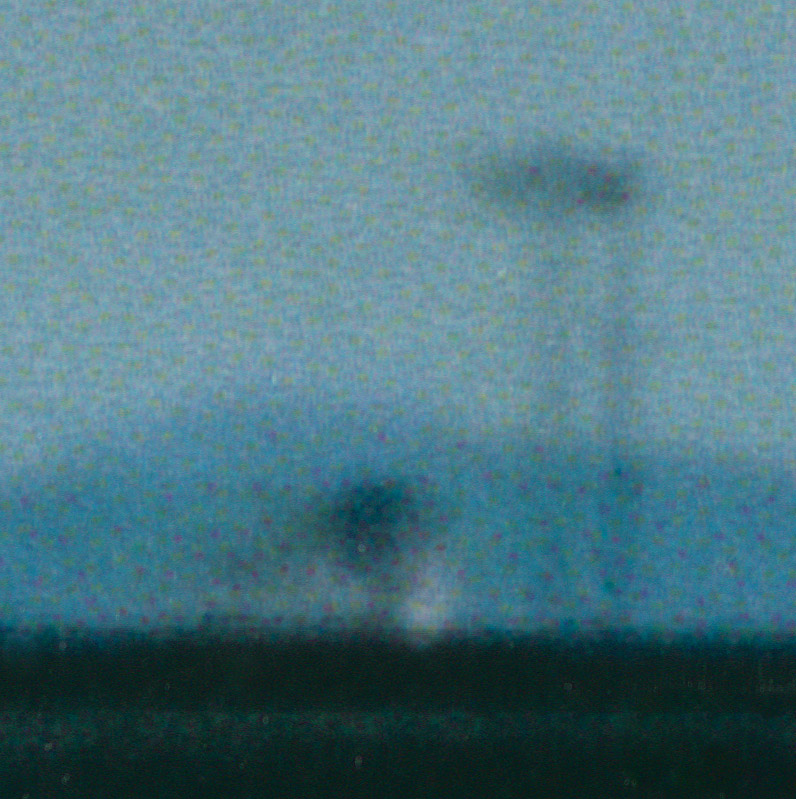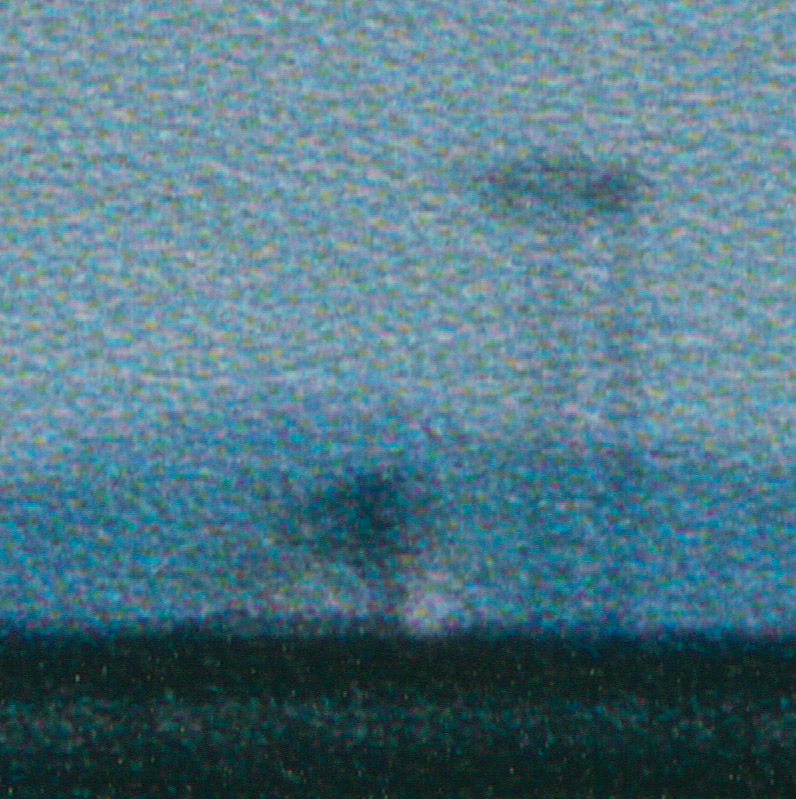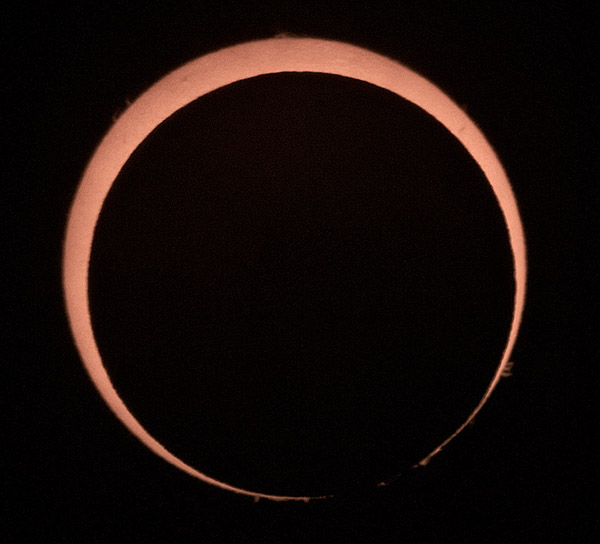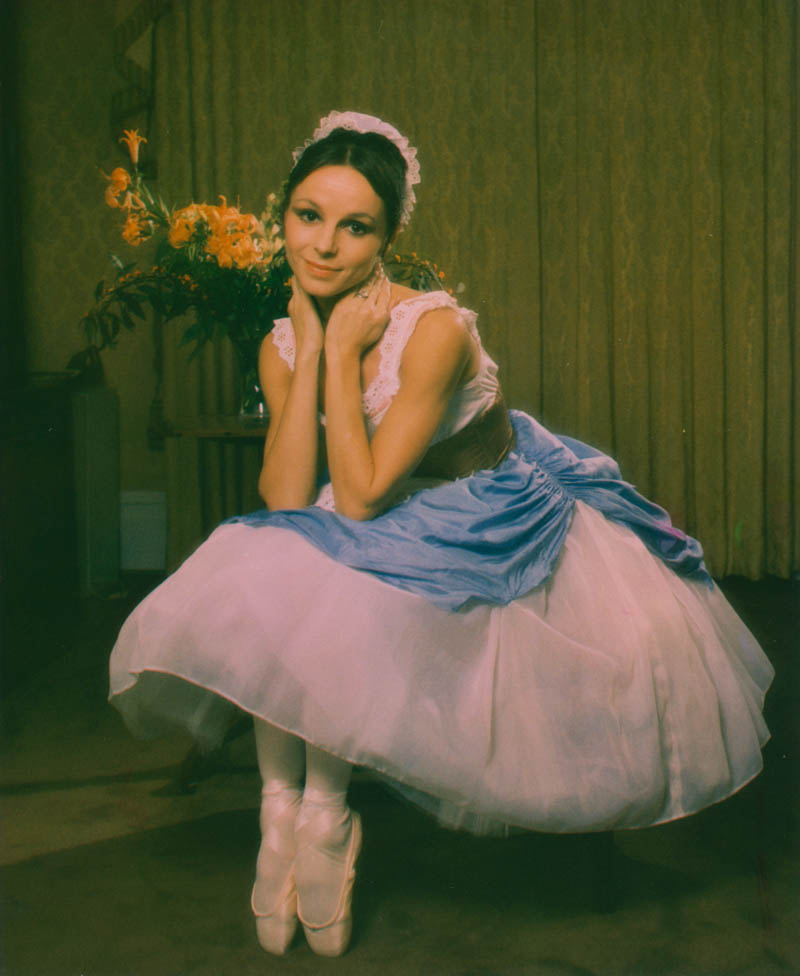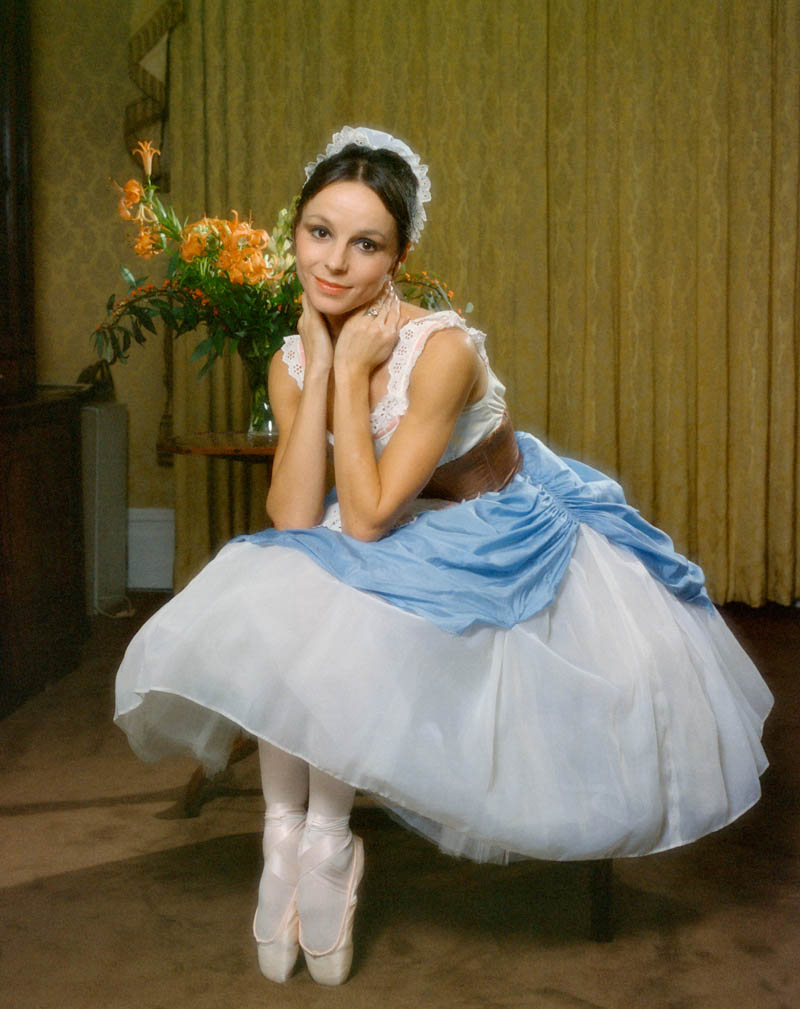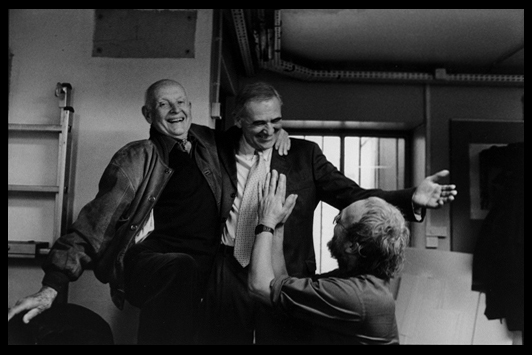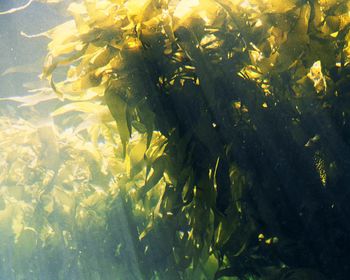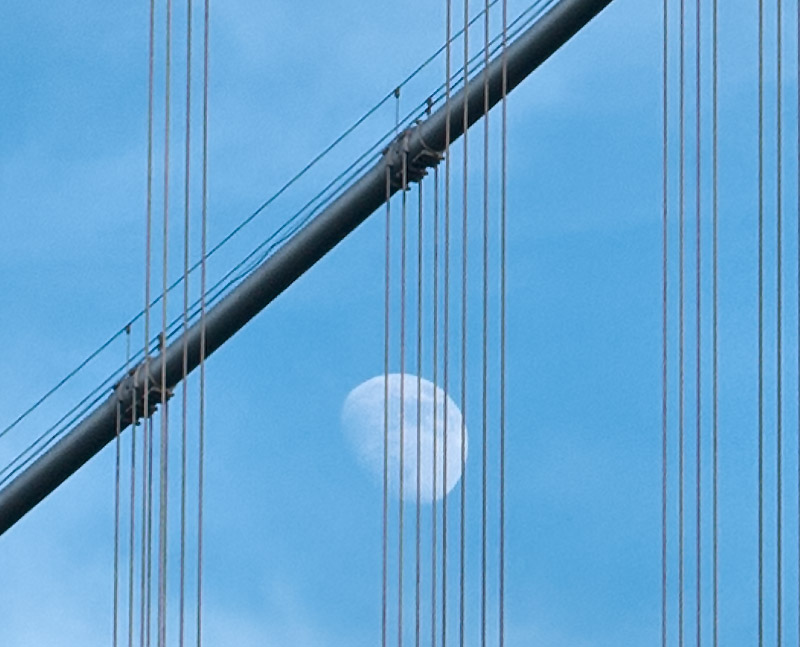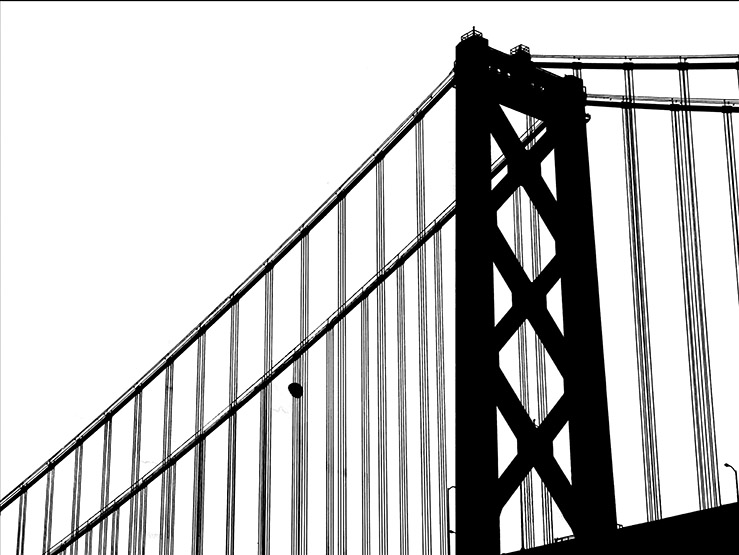The windmill I am currently tilting at is trying to get people to stop misusing the term "dynamic range" when they are talking about the exposure range of their camera. Last week I explained how real exposure ranges can be somewhat less than the dynamic range of the sensor. This week I'll explain how the exposure range can be significantly greater than the dynamic range.
Fig. 1. These four squares illustrate how a sensor responds to low levels
of light. In an imaginary world photons rain down uniformly, so any
exposure level less than one photon per pixel comes out pure black,
because you can't have fractional amounts of a photon. This also
means you can't record any intermediate gray levels between zero and
one photons or between one and two photons per pixel.
Most Internet musings on the subject of sensor behavior and image characteristics don't have anything to do with the way the real, physical world works. Most notably, almost all the discussions of exposure range, number of gray levels recorded, and so on, imagine a uniform, noiseless world that is far removed from reality. In their mythical universe, figure 1 shows what happens when you expose a sensor to very low light levels, starting with perfect blackness (zero photons per pixel) on the left, up to one photon per pixel on the right. Axiomatically, you can't subdivide photons, so everything remains pitch black until you reach a level of one photon per pixel, and then suddenly you see a signal. Similarly, although not illustrated here, the next jump in response occurs when you reach a level of two photons per pixel; 1.5 photons per pixel just doesn't mean anything.
Right?
That's a rhetorical question. You know I'm going to tell you it's wrong. And here's why.
Counting statistics. In the real world, when the exposure works out to an overall flux of one photon per pixel, we don't actually get one photon per pixel. Light doesn't come in a uniform rain of photons. One photon is only the average. What actually happens is the likelihood of any one pixel seeing some number of photons follows something called a Poisson distribution. (Wikipedia will tell you more than you probably want to know about this). In reality, equal numbers of pixels receive either one or zero photons, totalling about 75% of all pixels. About 1/5 of the pixels will see two photons. About a sixteenth will see three, and lesser fractions four or more photons.
 Fig. 2. In the real world, photons arrive randomly, obeying Poisson
statistics. This figure illustrates what a 10x10 array of pixels
might see when exposed to different levels of light—0, 0.25, 0.5
and 1 photon/pixel, average.
Fig. 2. In the real world, photons arrive randomly, obeying Poisson
statistics. This figure illustrates what a 10x10 array of pixels
might see when exposed to different levels of light—0, 0.25, 0.5
and 1 photon/pixel, average.
I've illustrated this in figures 2 and 3. Figure 2 shows 10x10 cells of pixels, highly magnified, so you can see the way Poisson distributions look. For figure 3 I tiled bunches of these together so you'd see something at 100% scale, like in a real photograph, instead of much-magnified. (These illustrations will be easier to see if you click on them to open the larger versions.) The tiling's why you see fine repeating patterns in figure 3. In real life those wouldn't be there, but I wasn't about to hand draw 100,000 pixels!
 Fig. 3. The same light distributions as in figure 2, but now you're
looking at 160 x 160 pixel zones, to better simulate the visual
appearance of a real photograph. Ignore any repetitive fine textures;
that's caused by me tiling the zones in figure 2 to fill the large
areas.
Fig. 3. The same light distributions as in figure 2, but now you're
looking at 160 x 160 pixel zones, to better simulate the visual
appearance of a real photograph. Ignore any repetitive fine textures;
that's caused by me tiling the zones in figure 2 to fill the large
areas.
Overall, seen from a distance, the 0-photon and one-photon-per-pixel zones in figures 1 and 3 look very similar. No surprise, there. Figure 3 looks grainy, because there is a mix of pixels with different numbers of photons. This is one of those places where having more pixels unequivocally wins out over having fewer; the grain gets finer.
The import of this statistical noise is that you can distinguish several levels of gray between integral-photon illuminances (see last week's column). In particular it means you can record light levels below the single-photon-average threshold of the detector. Suppose you set the exposure so that there is an average of only 1/2 photon per pixel. You don't get solid black, as the armchair "experts" imagine. A plurality of pixels do indeed see no photons, but a minority see one photon, and a small fraction see two. The resulting photograph will be grainy, but on average it will appear to be a darker tone than the one-photon picture and it will be usably lighter than solid black.
Even a 1/4 photon-per-pixel exposure produces a visibly-lighter-than-black tone, although it's getting marginal. Our original "10 stop dynamic range" sensor clearly has a real, useful exposure range greater than 11 stops, as you can see my illustrations.
Even mixing in the intrinsic system noise that I discussed last time doesn't necessarily wipe this out, as figure 4 illustrates. It gets harder to see the distinct zones, but they're still visible. Again, the more pixels you have to work with, the clearer the distinctions between tones.
 Fig. 4. Toss in a moderate amount of system noise and you've got an
approximation of real photography. The tones are grainy but distinct
from pure black, even at the 0.25 photons per pixel level.
Fig. 4. Toss in a moderate amount of system noise and you've got an
approximation of real photography. The tones are grainy but distinct
from pure black, even at the 0.25 photons per pixel level.
So, now you know that dynamic range may happen to match exposure range. Or, it's going to be better. Or worse. And sometimes the difference will be very significant.
As I said last week, my gripe derives from the fact that we had a useful and accurate term that was widely understood, and a bunch of semi-informed neologists decided to replace it with a more techie-sounding but incorrect and inaccurate term.
There's a very simple fix to this. Just stop saying "dynamic range." You're never actually talking about that; what you are talking about and interested in is "exposure range." Just start saying that, OK? I try to always do this, and so far no one has ever written to me saying, "I don't understand what you mean by exposure range." Trust me, no one will misunderstand you.
Next time I'm going to explain to you how Raw data isn't really all that "raw."
Ctein
Columnist Ctein illumines the darkness every Wednesday on TOP.
Send this post to a friend
Please help support TOP by patronizing our sponsors B&H Photo and Amazon
Note: Links in this post may be to our affiliates; sales through affiliate links may benefit this site. More...
Original contents copyright 2012 by Michael C. Johnston and/or the bylined author. All Rights Reserved.
